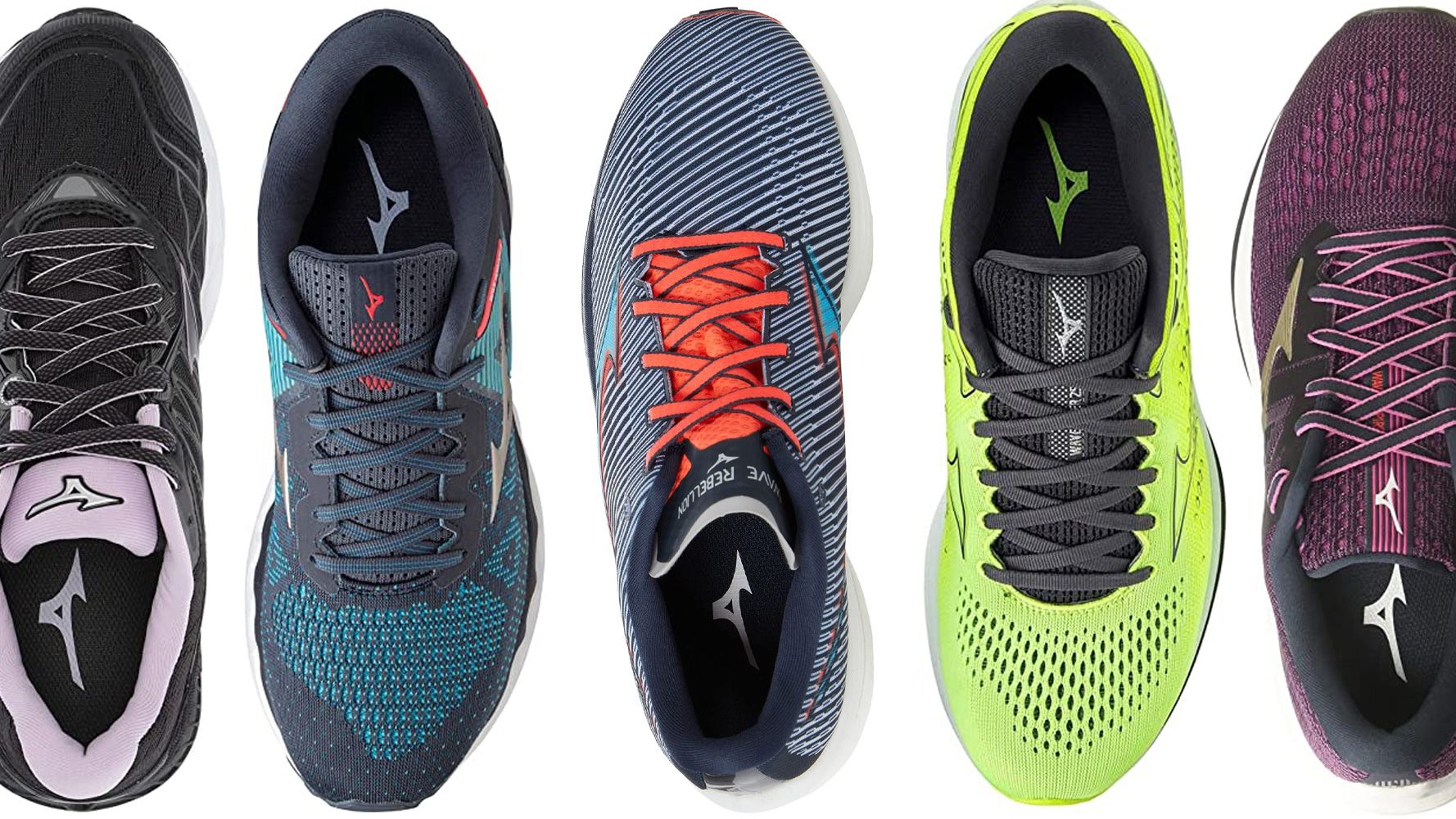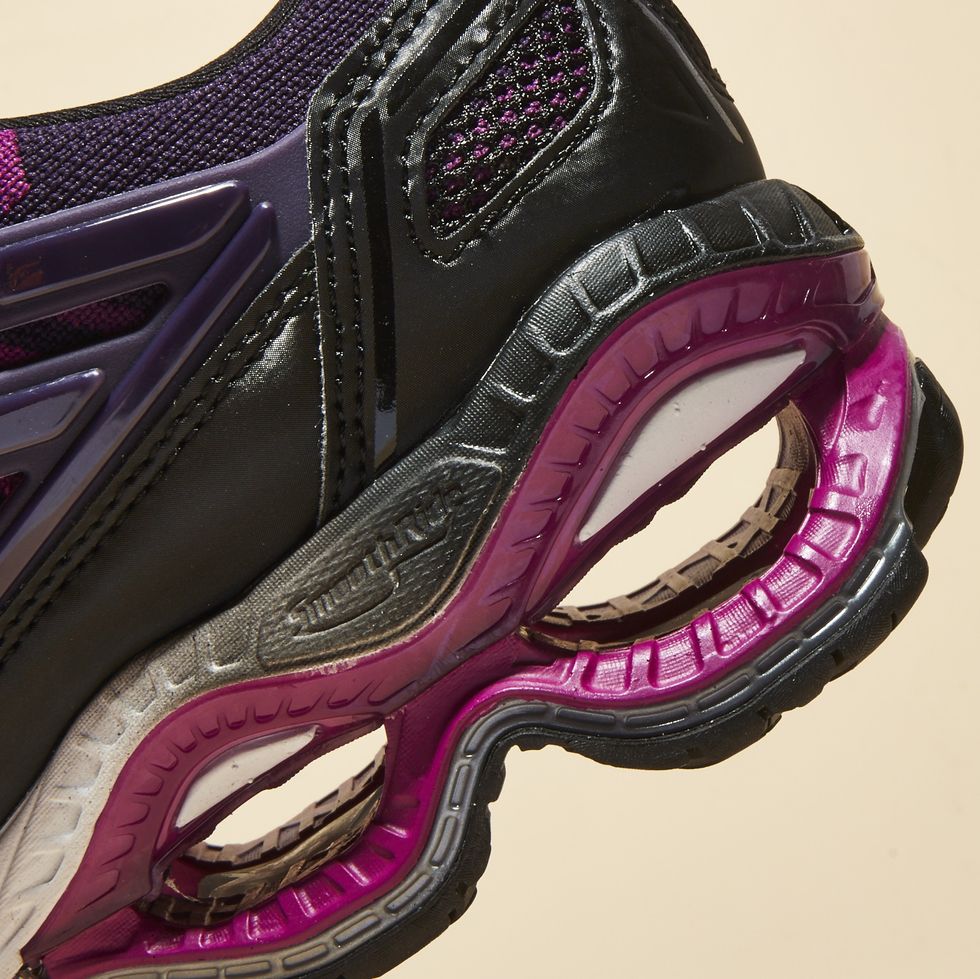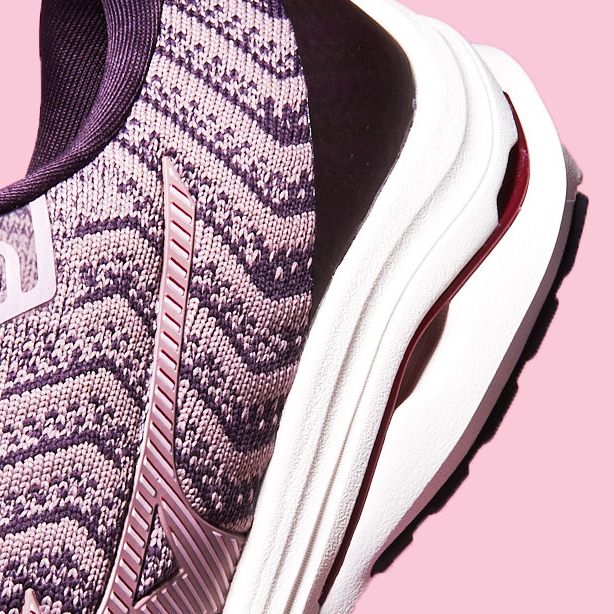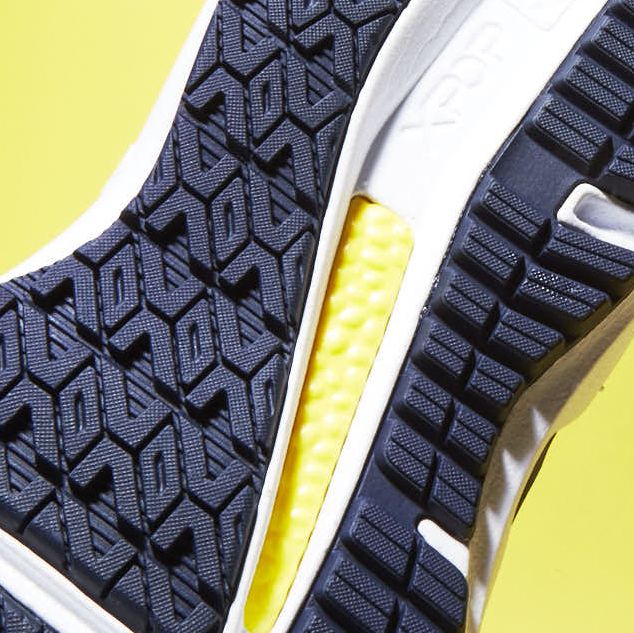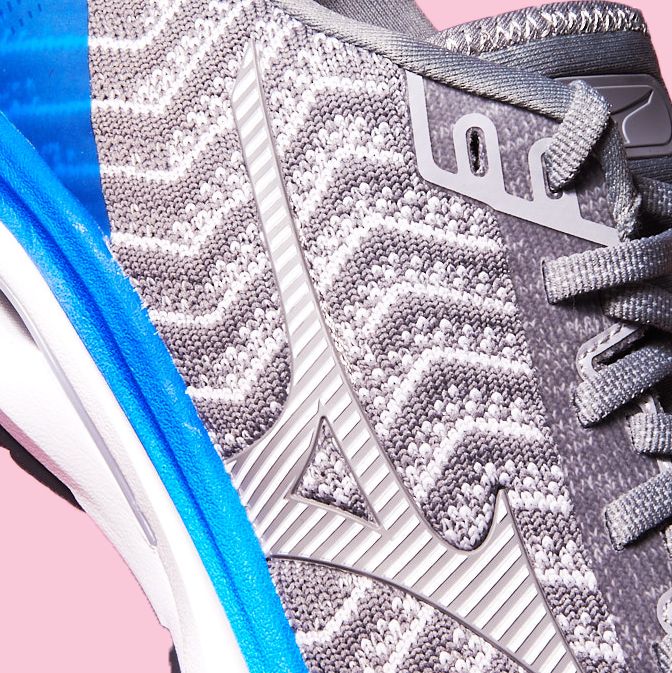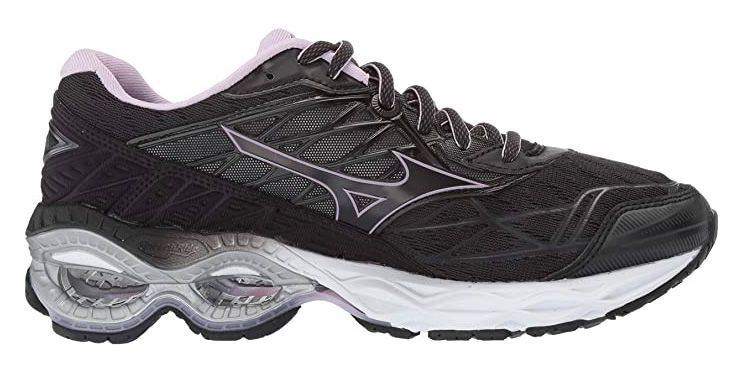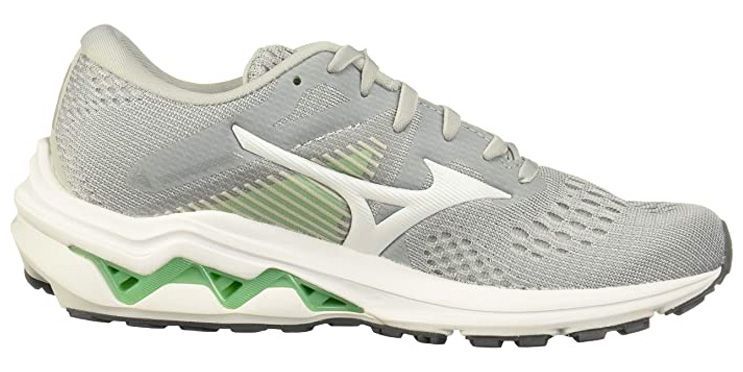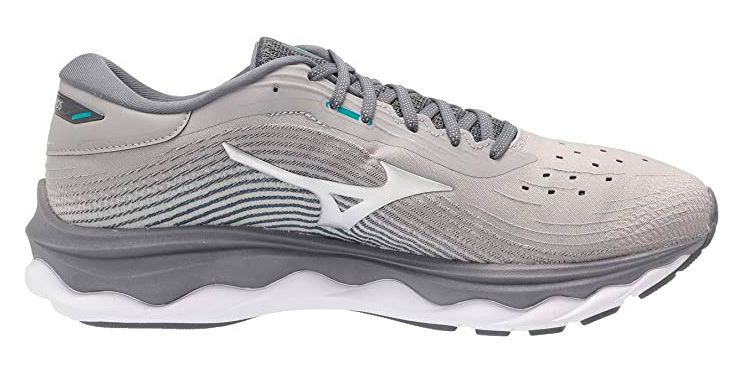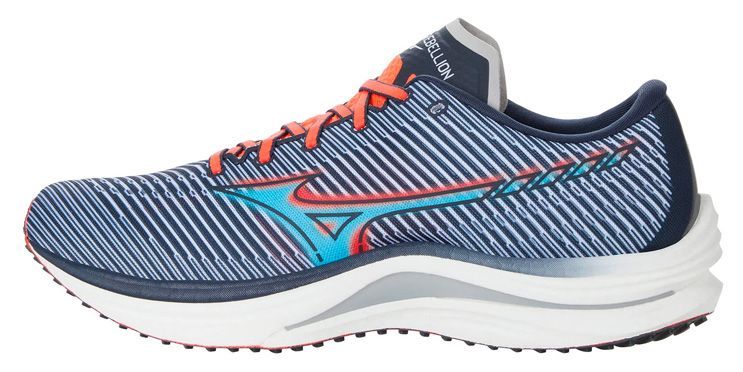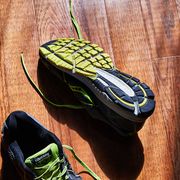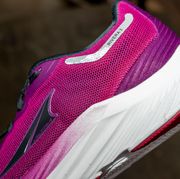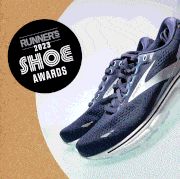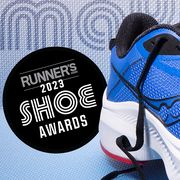Mizuno began to establish itself as a major player in running shoes in the 1980s. In 1982, it released its RunBird line of shoes in America and debuted a new logo that still adorns Mizuno products today. The RunBird led to several notable shoes in the ’80s, among them the Air Genova ST, which featured a precursor to the company’s wave plate, an insert that helps the midsole absorb impact forces while also supporting the foot. At the time, that kind of stability technology was a big leap forward, and it helped runners avoid injuries from hard impacts.
Mizuno then set out to build the ultimate speed shoe, which resulted in the Racing Star 100 in 1988. Designed to be lightweight and highly flexible, it featured 462 different spike layouts to match the exact foot shape and ground feel preferences of the athletes who wore them—an unheard-of level of customization. The Racing Star 100 shoes were more than just a novelty, however: They propelled Carl Lewis to break the men’s 100-meter dash record in 1991. Since then, Mizuno has continued to develop its signature technology, the wave plate. Like other running brands, Mizuno has also formulated cutting-edge new cushioning foams to increase the performance of its shoes.
Best Mizuno Running Shoes
- Best for Long Runs: Wave Creation 20
- Plush and Stable: Wave Horizon 5
- Most Versatile: Wave Rider 25
- Responsive and Stable: Wave Inspire 17
- Plushest Ride: Wave Sky 5
- Best for Speedwork: Wave Rebellion
Riding the Wave
Mizuno took the midsole concept first used in the Air Genova and refined it into the company’s signature wave plate system on the Wave Rider shoe in 1997. When combined with cushioning material, this plastic plate increases energy return, dissipates impact forces, and helps the midsole keep its shape throughout the stride. Although it has evolved over the years, the wave plate still underpins the company’s shoes. Infinity Wave, released in 2007, is a novel sole design made of two wave plates sandwiched on top of each other. Cloudwave technology, released in 2016’s Wave Rider 20, utilizes a wave plate with a special concave geometry to cup the bottom of the heel.
Beyond the Wave
Two of Mizuno’s EVA-based midsole cushioning foams are U4ic—pronounced “euphoric”—and U4icX. The newer and lighter version released in the Wave Enigma 5 in 2015, U4icX is refined to deliver even more softness and energy return. XPop, made from springy TPU pellets embedded in polyurethane foam, provides longer lasting cushioning, though at the expense of more weight and decreased energy return.
More recently, the company debuted Enerzy, a foam that’s formulated to be even softer and bouncier. The Wave Rider 24 was the first running shoe to feature Enerzy, and Mizuno has been steadily spreading it around the lineup since its debut. The company has also developed specialized versions of Enerzy foam. Enerzy Core is the softest variety (it’s used in the plush Wave Sky 5), and Enerzy Lite (found in the speedy Wave Rebellion) is formulated for increased energy return.
Mizuno has also been rolling out knit uppers on its shoes with Waveknit, a material made from synthetic fibers woven in an overlapping vector pattern. The vector shapes have a thicker knit that is less stretchy than the rest of the fabric, which lends support to your foot while also allowing the upper to flex as you move. That gives your feet more room to splay out in the toe box for a more comfortable fit.
How We Evaluate
Many of the Mizuno shoes you’ll find below have been through our extensive testing process. That means getting each model on the feet of our team of over 350 avid runners, who then put at least 100 miles on the shoe before providing their feedback. As our test team and staff report their on-foot impressions, we also run a battery of mechanical tests in our RW Shoe Lab, where we measure the energy return of Mizuno’s Enerzy foam, the flexibility of its midsole wave plates, and more. For models we haven’t personally laced up, we rely on our own in-depth research and experience in the running shoe industry, personal consultation with product engineers, and data we’ve collected on previous Mizuno models in our lab. Here are the best Mizuno running shoes that you can buy right now.
Wave Creation 20
Weight: 13.6 oz (M), 11.6 oz (W)
Drop: 15 mm
The Wave Creation uses Mizuno’s Infinity Wave support system, which gives it the unique open outsole under the heel. This construction is designed to give superior shock absorption, support, and responsiveness—a hard balance to achieve with more traditional cushioning materials. It also features a full-length layer of U4icX cushioning for extra energy return, and this layer is scored with crosswise grooves to increase flexibility. It’s a great option for runners looking for a supportive ride that also lets them feel the road.
Wave Horizon 5
Weight: 11.6 oz (M), 9.7 oz (W)
Drop: 10 mm
The Horizon combines a stable, cushioned ride with exceptional durability. In this version, Mizuno did some reshuffling of the cushioning foams: U4ic is out, the bouncy XPop layer has moved up to the top (closest to your foot), soft and springy Enerzy foam sits in the middle, and U4icX rounds out the bottom. Like the Horizon 4, the foams are cut in a wave shape to counter overpronation while maintaining some flexibility, and and we found the durable carbon rubber outsole handles 400 miles of running easily.
Wave Rider 25 Waveknit
Weight: 10.1 oz (M), 8.3 oz (W)
Drop: 12 mm
The Wave Rider has long been the neutral do-it-all shoe in Mizuno’s lineup. For the 25th iteration, Mizuno amped up the shoe’s dual-compound midsole system with added Enerzy foam. That plush material is combined with Mizuno’s U4ic foam and an embedded wave plate to create a smooth, cushioned ride with some extra bounce. The shoe is topped with a Waveknit upper for a snug fit, and the carbon rubber outsole should hold up well through demanding training schedules. Overall, the Wave Rider makes a good choice for anything from speedwork to longer efforts.
Wave Inspire 17
Weight: 10.9 oz (M), 9.2 oz (W)
Drop: 12 mm
The Wave Inspire 16 offered moderate stability and a smooth ride with an emphasis on plush cushioning in the heel. This latest version comes upgraded with a wedge of Mizuno’s new Enerzy foam in the heel for added responsiveness, while the trusty EVA-based U4ic foam rounds out the rest of the midsole. Sandwiched between these layers of foam is a fan-shaped wave plate that delivers supportive cushioning to help counter overpronation. Plus, the shoe’s carbon rubber outsole is exceptionally durable. If you prefer a stretchier upper, there’s a Waveknit version available for both men and women.
Wave Sky 5
Weight: 11.8 oz (M), 9.8 oz (W)
Drop: 8 mm
The previous version of the Wave Sky utilized an unusual combination of three foams to deliver plush cushioning, but Mizuno simplified things with the fifth iteration. This shoe features a new cushioning compound, Enerzy Core, which is the company’s softest and most responsive foam. It’s paired with standard Enerzy foam and Mizuno’s trademark wave sole structure to create a highly cushioned, supportive platform that soaks up impact forces and generates some energy return, too. Compared to the outgoing Wave Sky 4, Mizuno also trimmed some weight and improved the fit thanks to a new woven upper.
Wave Rebellion
Weight: 8.8 oz (M), 7.4 oz (W)
Drop: 8 mm
The Wave Rebellion is a totally new shoe for Mizuno, and with its low weight and speed-focused design, it’s a departure from the rest of the company’s running shoe lineup. It contains quite a bit of new tech, including Enerzy Lite cushioning, which is tuned for increased energy return, and a glass fiber–reinforced wave plate for an exceptionally snappy, propulsive feel. In her testing, RW editor Morgan Petruny noticed the plate created “a pronounced quick-rolling flick accompanying each footstrike.” In addition, the Wave Rebellion’s outsole utilizes a unique polyurethane resin material that offers good grip and durability without the weight penalty of rubber. For speedwork and shorter races, this is the Mizuno shoe you want.
Shop Men’s Shop Women’s Read Review
Michael is a freelance writer with years of experience covering gear and the outdoors for Runner's World and other publications; when he's not writing, he's usually biking, hiking, and running in the mountains around Los Angeles, where he lives.
